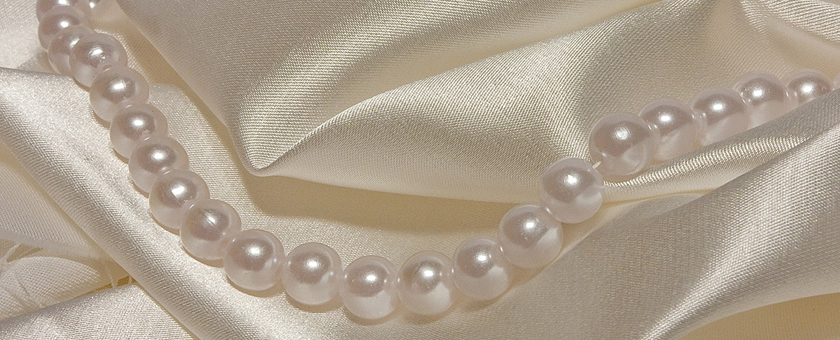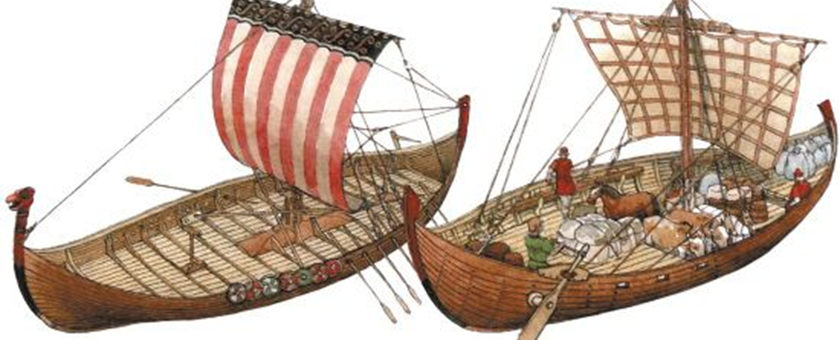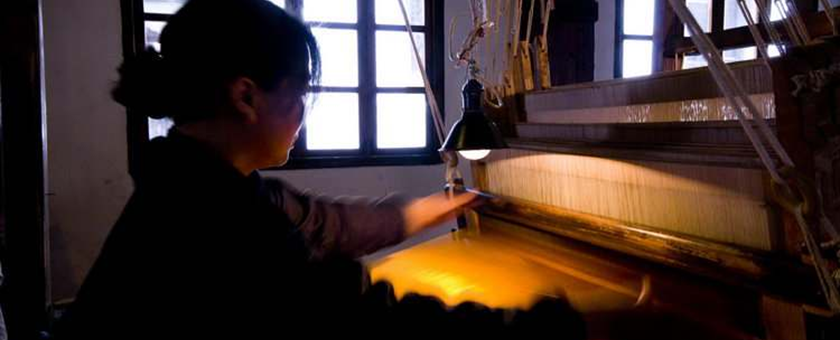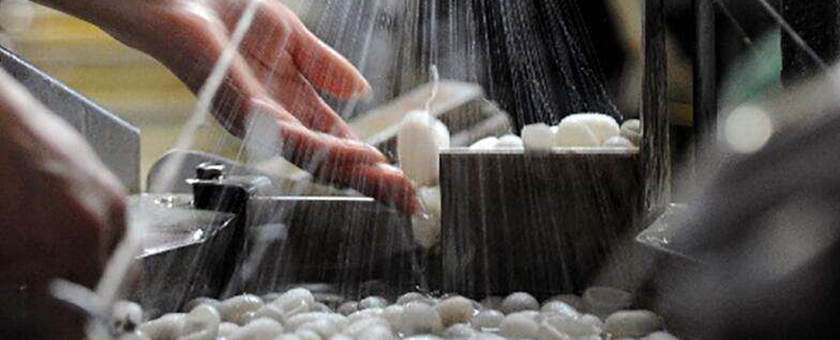chinese-art/2020/0413/silk.html
Silk is a general term for a fabric made of pure or woven silk or rayon. It is a special product of China. The ancient Chinese laboring people invented and produced silk products on a large scale, which opened the first large-scale commercial exchange between east and west in the world history, and was known as the Silk Road in history. From the Western Han Dynasty, China's silk was continuously exported in large quantities, becoming a world-famous product. At that time, the road from China to the west was called the "Silk Road" by Europeans, and China was also called the "Country of Silk".

Origin of Silk
China was the first country in the world to use mulberry silk, so it was called silkworm in ancient times. Archaeologists found a 6,000-year-old ivory cup with silkworm grain at the Hemudu Site in Yuyao City, Zhejiang Province, and the oldest surviving silk products, including silk fabrics, ribbons and threads, were found at the Qianshanyang Site in Huzhou City, Zhejiang Province. Thus, Chinese silk production was not later than the Neolithic Age.
The silk industry developed during the Spring and Autumn and Warring States Periods (770-221 BC). Several silk centers were established in present-day Shandong, Kaifeng, and Shaoxing. During Han Dynasty (202-220bc), complex jacquard looms were formed, and today Sichuan Province is the center of anther silk production. By the Tang and Song Dynasties (618-1279), silk production technology was further improved, and the output of silk fabric was greatly increased. During the Ming and Qing Dynasties (1368-1912), China's ancient silk industry reached its highest level of beauty, texture and craftsmanship, and silk fabrics and garments were no longer the exclusive preserve of the aristocracy. Merchants and scholars also wore silk.

Production of Silk
Chinese silk is famous for its fine quality, exquisite design and color, exquisite craftsmanship and strong national culture. In terms of texture and workmanship, there are four major silk producing provinces in China, namely Jiangsu, Hunan, Sichuan and Guangdong. Influenced by geographical conditions, local customs and culture, these four kinds of silk have formed their own styles, each with its own characteristics. Some are beautifully composed; some are brightly colored and have a wide variety of patterns; while others emphasize nature and rich in embroidery. Chinese embroidery was usually attached to silk, and the variety of embroidery greatly enriched the production of silk. Chinese silk is considered to be the most suitable material for human skin, having a comfortable feeling, absorbing and releasing moisture, absorbing dust, and resisting heat and UV rays.
With the long development of silk, China now produces hundreds of varieties of silk, thousands of colors and patterns. Single side embroidery, double side embroidery, pillowcase, tablecloth, clothing and shoes are available for customers to choose. There are silk products in the market of almost every city, but the best should be the professional shops in famous production cities and large tourist cities such as Suzhou, Hangzhou, Beijing, Shanghai, Guilin and so on.

Silk Making
Silk making usually involves dividing the raw silk in cocoons into horizontal and vertical strands and then weaving them into pieces of fabric. The actual process of making of each kind of silk varies, but generally it can be divided into two categories: Shengzhi and Shuzhi..
In the Shengzhi process, the weaver first weaves the raw silk into a fabric, which is then washed and bleached. This process is the main method of silk production at present because of its low cost and short time. In the Shengzhi method, the weaver first washes and bleaches the latitude and longitude of the cocoon before weaving it. Textile products no longer need further processing andcan be used directly. This method is commonly used to produce fine silk fabrics, such as brocade.
Before silk is woven, many preparations are made, such as soaking raw silk to soften the product. At the same time, because silk absorbs moisture easily, it is very important to prevent moisture before weaving. As far as silk pattern is concerned, weaving methods can be divided into two types: ordinary type and jacquard type. The former refers to plain silk fabrics with no weave pattern, while the latter refers to fabrics usually woven by a jacquard machine (a mechanized loom used to weave a particular pattern). When the silk fabric is ready, the next step is the dyeing process (which is the key to the whole process, making the silk colorful and beautiful). With the development of dyeing technology, raw silk can become perfect silk, and patterns and colors can satisfy people's desire.

Silk Road
Since the discovery of silk, Chinese have invented new ways of making clothes from silk. This kind of clothes soon caught on. At that time, China's technology was developing rapidly. Emperor Wudi of the Western Han Dynasty decided to develop trade with other countries.
Road building became the focus of the silk trade. Silk Road was built for this purpose. China's Silk Road went through many dynasties from the Han, Tang and Qing Dynasties. It starts in Chang 'an (Xi 'an) in Shaanxi Province and travels westward through the Hexi corridor of Gansu Province to the Xinjiang Uygur Autonomous Region. silk road went through central, south and west Asia. Many countries in Asia and Europe are connected. Therefore, Chinese silk and many other inventions were brought to Europe through the Chinese Silk Road. Chinese silk became a symbol of their wealth.


 Flow us
Flow us

